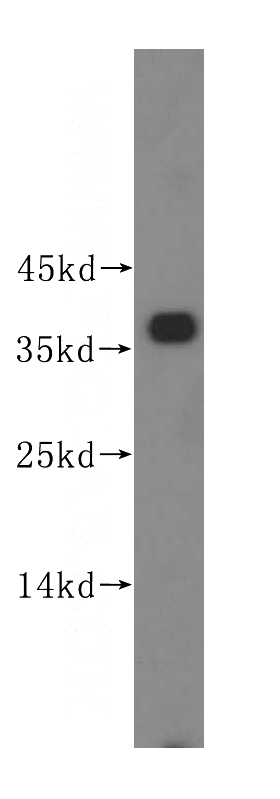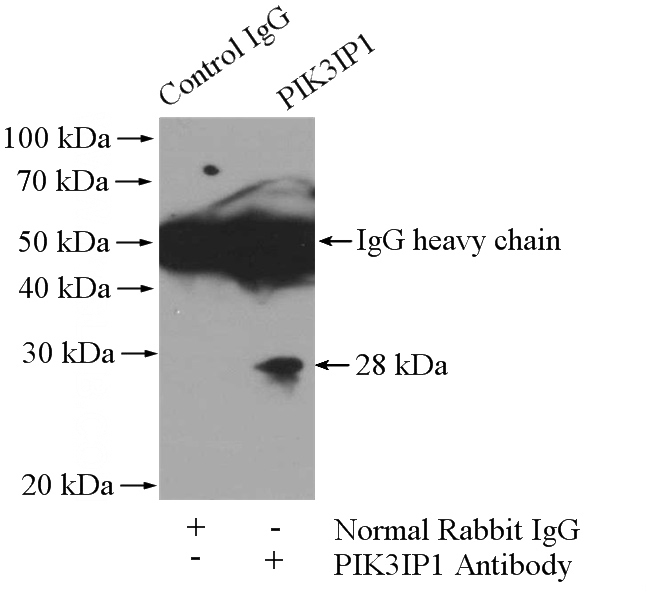-
Product Name
PIK3IP1 antibody
- Documents
-
Description
PIK3IP1 Rabbit Polyclonal antibody. Positive WB detected in HeLa cells, HepG2 cells, mouse liver tissue. Positive IP detected in HeLa cells. Observed molecular weight by Western-blot: 37 kDa
-
Tested applications
ELISA, WB, IP
-
Species reactivity
Human,Mouse,Rat; other species not tested.
-
Alternative names
HGFL antibody; hHGFL(S) antibody; PIK3IP1 antibody
-
Isotype
Rabbit IgG
-
Preparation
This antibody was obtained by immunization of PIK3IP1 recombinant protein (Accession Number: NM_052880). Purification method: Antigen affinity purified.
-
Clonality
Polyclonal
-
Formulation
PBS with 0.02% sodium azide and 50% glycerol pH 7.3.
-
Storage instructions
Store at -20℃. DO NOT ALIQUOT
-
Applications
Recommended Dilution:
WB: 1:500-1:5000
IP: 1:200-1:2000
-
Validations

HeLa cells were subjected to SDS PAGE followed by western blot with Catalog No:113904(PIK3IP1 antibody) at dilution of 1:500

IP Result of anti-PIK3IP1 (IP:Catalog No:113904, 4ug; Detection:Catalog No:113904 1:500) with HeLa cells lysate 3200ug.
-
Background
PIK3IP1(Phosphoinositide-3-kinase-interacting protein 1) is also named as HGFL. The class IA phosphoinositol-3-kinases (PI3Ks) regulate important cellular processes such as proliferation, growth, survival, motility and metabolism. PIK3IP1 is a transmembrane protein that possesses a region in its intracellular domain that shares homology with the p85 regulatory subunit of PI3K(PMID:18632611). It has 4 isoforms produced by alternative splicing. It also has a signal peptide and two glycosylation sites.
-
References
- Song HK, Kim J, Lee JS. Pik3ip1 modulates cardiac hypertrophy by inhibiting PI3K pathway. PloS one. 10(3):e0122251. 2015.
- Wong CC, Martincorena I, Rust AG. Inactivating CUX1 mutations promote tumorigenesis. Nature genetics. 46(1):33-8. 2014.
Related Products / Services
Please note: All products are "FOR RESEARCH USE ONLY AND ARE NOT INTENDED FOR DIAGNOSTIC OR THERAPEUTIC USE"
